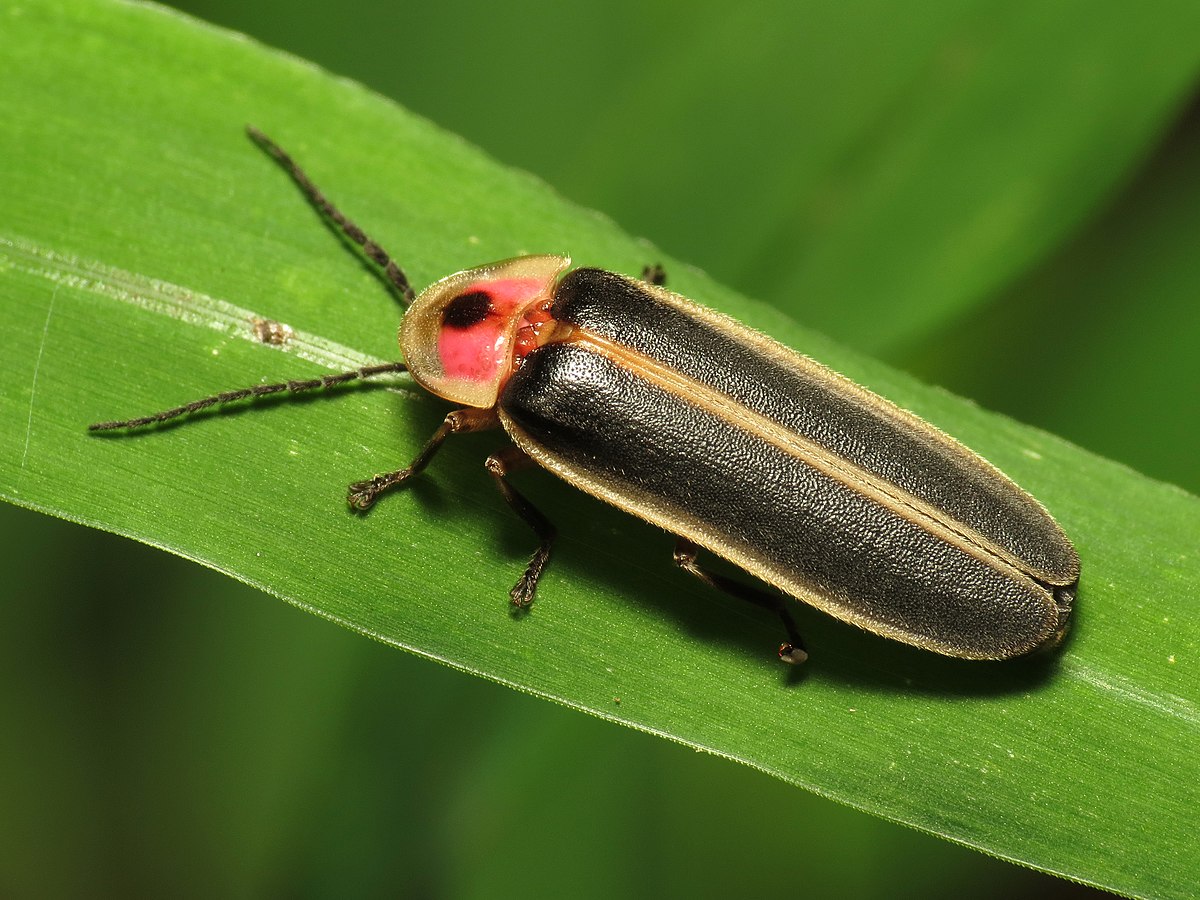Fireflies illuminate landscapes with summer love

COLUMBIA, Mo.— The flickering of fireflies signals the beginning of warm summer nights.
Although these common beetles evoke a sense of wonder for many people, they are simply performing a luminescent courtship ritual that has evolved over countless years, says University of Missouri Extension state horticulturist Michele Warmund.
About 2,200 are known species of fireflies worldwide, with about 125 in North America. The American big dipper firefly (Photinus pyralis) is the most common species in Missouri. Adults of this firefly are about a half-inch long, have a red plate behind the head with a black spot in the center, a blackish-brown body and wing covers (elytra) outlined in yellow. The last section of the abdomen, which emits a flicker of light, is known as the lantern.
The lantern glows when an organic substance called luciferin is oxidized in the presence of the luciferase enzyme, resulting in the release of energy as light.
At dusk or during the early evening, male big dipper fireflies display a J-shaped flash about every six seconds while hovering about two feet from the ground to attract mates. Females are usually found in grass or other low-growing vegetation, waiting for an attractive mate. A female will flash back to the hovering male to signal that she will accept him or remain dark if she rejects the male, says Warmund.
The female big dipper firefly lays her eggs, which also glow briefly, on the soil surface. After 18 to 25 days, the eggs hatch, and the larvae, with two light-producing organs, begin feeding on snails, slugs and worms. The larval stage lasts one to two years before the luminescent pupal stage, which lasts only about 9 to 15 days.
Firefly numbers are diminishing in areas where their habitat is shrinking and where light pollution occurs. To preserve fireflies in residential areas, leave a bit of vegetation such as grass clippings or leaf litter in a small area, which will retain moisture and attract fireflies and their potential food sources. Use pesticides only when needed. Limit outdoor lighting when fireflies are active. If needed, use red light bulbs, as this color is less disturbing to fireflies. Then sit back, relax and enjoy their ethereal beauty as they perform their courtship flickering in the night, says Warmund.
Miss Clipping Out Stories to Save for Later?
Click the Purchase Story button below to order a print of this story. We will print it for you on matte photo paper to keep forever.

